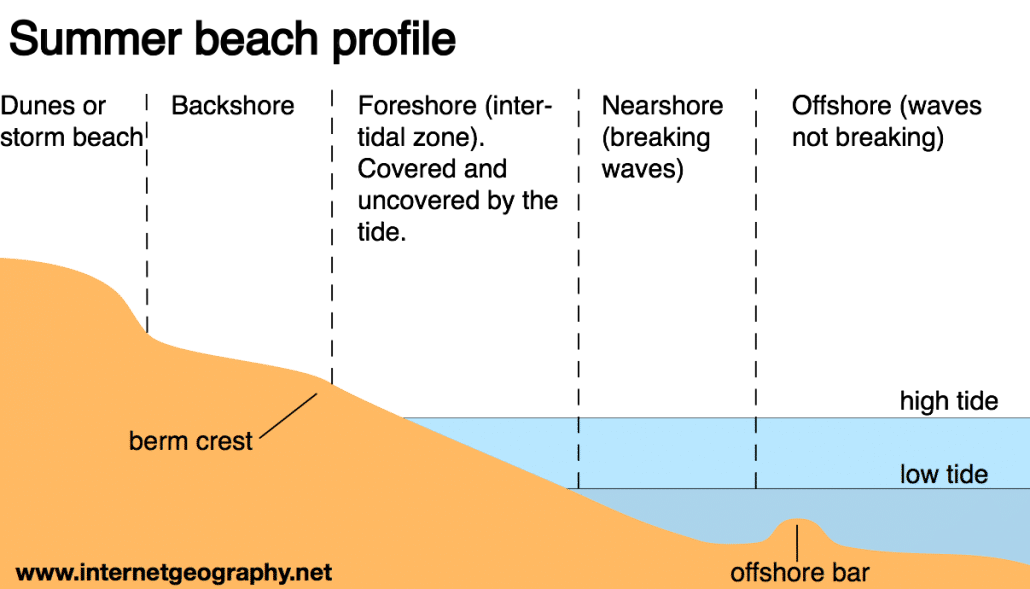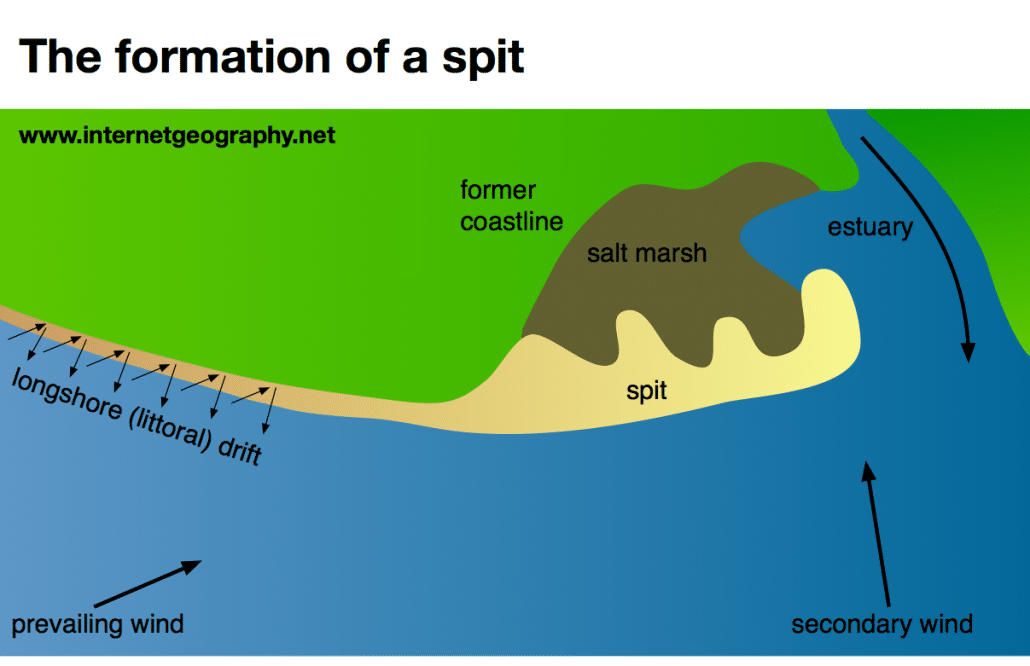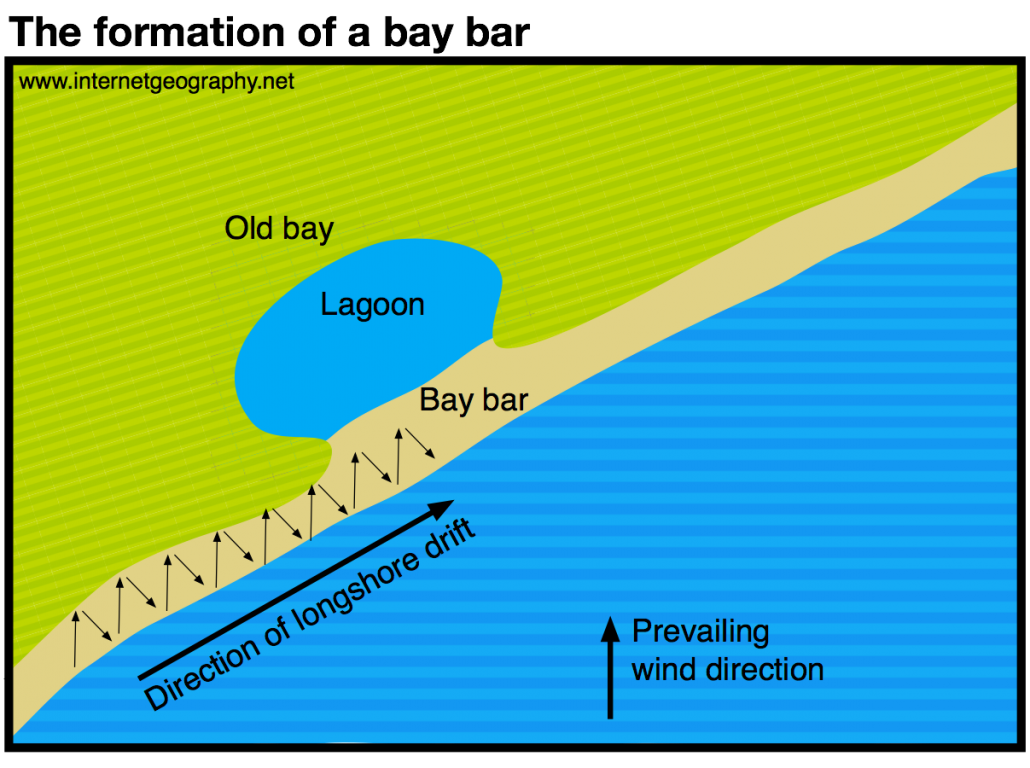Landforms of Coastal Deposition
Beaches
These are the most common coastal deposition landforms, typically found along the sea’s edge. They consist of accumulated sediments, such as sand, pebbles, or gravel, deposited by waves and currents. Depending on the local wave energy and sediment source, beaches can vary significantly in size, shape, and composition.
Spits
Spits are long, narrow pieces of land that jut out into the sea from the coastline. They are formed by the deposition of sediments transported by longshore drift – a process where waves approach the beach at an angle, moving sediments along the coastline. Over time, the deposited material builds up and extends into the sea, forming a spit. Spits often have a hooked or curved end due to wind and wave direction changes.
Tombolo
A tombolo is a spit connecting an island to the mainland or another island. Due to sediment deposition, it is formed when a spit extends from the mainland to an island or between two islands. The process is the same as that which forms spits, but the offshore island changes the wave conditions to promote deposition between the island and the mainland.
Bars
A bar is another coastal landform created by deposition. It is similar to a spit, but instead of projecting out into the sea, it runs parallel to the coast, connecting two headlands and enclosing a body of water behind it, forming a lagoon or bay. Bars are formed when a spit grows across a bay or when there is significant sediment deposition between two headlands due to wave action and longshore drift.



